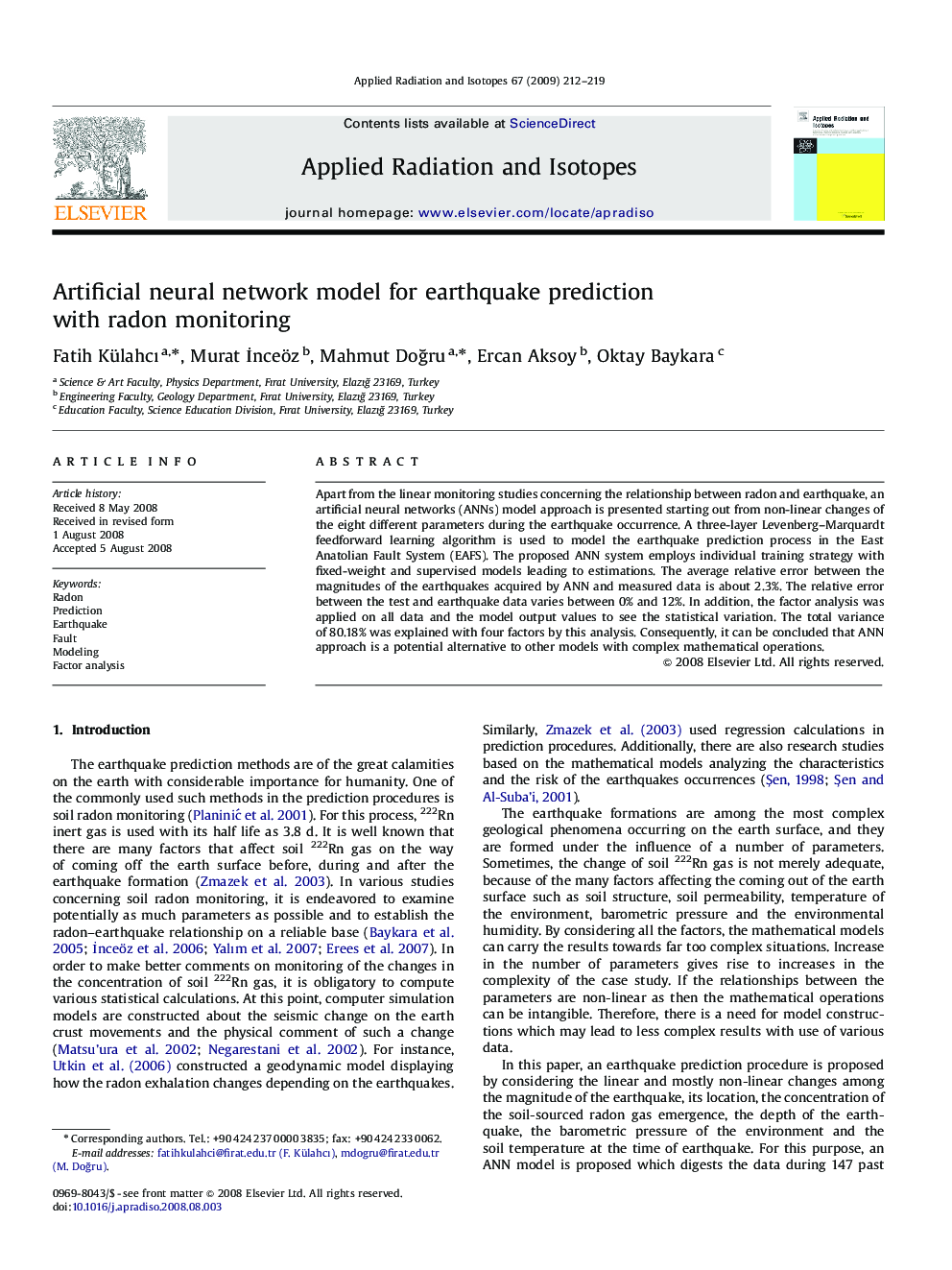| کد مقاله | کد نشریه | سال انتشار | مقاله انگلیسی | نسخه تمام متن |
|---|---|---|---|---|
| 1876821 | 1042033 | 2009 | 8 صفحه PDF | دانلود رایگان |

Apart from the linear monitoring studies concerning the relationship between radon and earthquake, an artificial neural networks (ANNs) model approach is presented starting out from non-linear changes of the eight different parameters during the earthquake occurrence. A three-layer Levenberg–Marquardt feedforward learning algorithm is used to model the earthquake prediction process in the East Anatolian Fault System (EAFS). The proposed ANN system employs individual training strategy with fixed-weight and supervised models leading to estimations. The average relative error between the magnitudes of the earthquakes acquired by ANN and measured data is about 2.3%. The relative error between the test and earthquake data varies between 0% and 12%. In addition, the factor analysis was applied on all data and the model output values to see the statistical variation. The total variance of 80.18% was explained with four factors by this analysis. Consequently, it can be concluded that ANN approach is a potential alternative to other models with complex mathematical operations.
Journal: Applied Radiation and Isotopes - Volume 67, Issue 1, January 2009, Pages 212–219